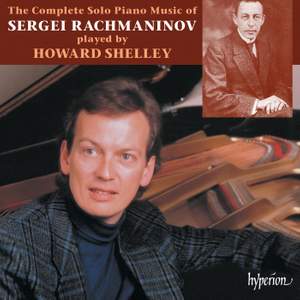Rachmaninov - The Complete Solo Piano Music
Howard Shelley (piano)
This Hyperion set is a significant testament to Howard Shelley's artistry. Pianistically impeccable, he understands what Rachmaninov was about.
The original piano works span 45 years of the composer's... — More…
Downloads
What are FLAC and MP3?Contents
Rachmaninoff: Morceaux de Fantaisie, Op. 3
No 1 in E flat minor. Élégie
No 2 in C sharp minor. Prelude: Lento
No 3 in E major. Mélodie
No 4 in F sharp minor. Polichinelle
No 5 in B flat minor. Sérénade
Rachmaninoff: Preludes Op. 23 Nos. 1-10
No 01 in F sharp minor. Largo
No 02 in B flat major. Maestoso
No 03 in D minor. Tempo di minuetto
Rachmaninoff: Morceaux de Salon, Op. 10
No 1 in A minor. Nocturne
No 2 in A major. Valse
No 3 in G minor. Barcarolle
Rachmaninoff: Moments Musicaux, Op. 16
No 1 in B flat minor. Andantino
No 2 in E flat minor. Allegretto
No 3 in B minor. Andante cantabile
No 4 in E minor. Presto
No 5 in D flat major. Adagio sostenuto
No 6 in C major. Maestoso
Rachmaninoff: Piano Sonata No. 2 in B flat minor, Op. 36
I. Allegro agitato
II. Non allegro
III. Allegro molto – Poco meno mosso – Presto
Rachmaninoff: Morceau de fantaisie in G minor (1890)
Rachmaninoff: Song without words
Rachmaninoff: Piano Piece in D minor
Rachmaninoff: Fughetta in F (1899)
Rachmaninoff: Fragments



